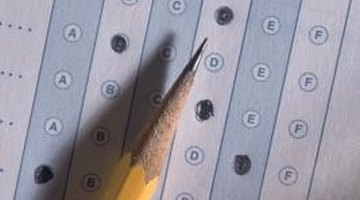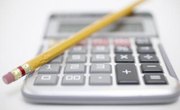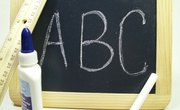When a student receives a score on a test -- especially a standardized test -- her parents often wonder what the score means. Age-equivalents provide parents with a simple way to compare their child's achievement to that of other students. Age-equivalent scores, expressed in years, are calculated by finding the average score obtained by a certain age group, such as students aged 8 years and 4 months. The students individual scores are then compared to this table to determine the age equivalent.
Age-Equivalent Table
Step 1
Record the scores and ages of all students who completed a test. Record the ages in years and months.
Step 2
Convert the age to decimal values by dividing the number of months by 12 and adding this to the number of years. For example, 7 years and 4 months would be 7.3 years.
Step 3
Calculate the average score for each age group. For example, if three children aged 7.3 years had scores of 45, 52 and 31, then the average score for this age group would be 43.
Step 4
Record the average scores in an age-equivalent table with the age group in the first column and the average score for that age group in the second column.
Step 5
Determine the age equivalent for a student by comparing her score to the table. Based upon the previous example, if a student aged 6 years scored 43 on the test, then she would have an age equivalent of 7.3 years. This means that she has the knowledge of the average 7.3-year-old.
Related Articles
References
- Texas A&M International University: Understanding Test Results
- "Parents' Guide to IQ Testing and Gifted Education : All You Need to Know to Make the Right Decisions for Your Child"; David Palmer; 2009
Writer Bio
Now living in Portland, Ore., Shawn Radcliffe has written about science and health since 1998, including online and print content for Drexel University and Oregon Health & Science University. He holds bachelor's degrees in music, English and biology from the University of Pittsburgh, as well as a Master of Science in science education from Drexel University.











